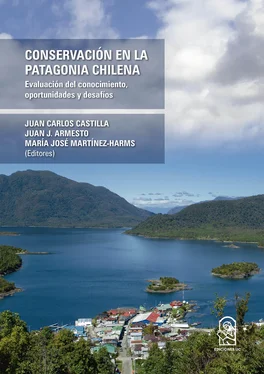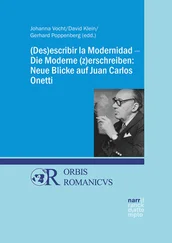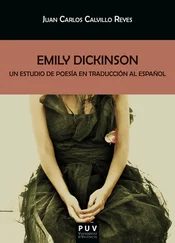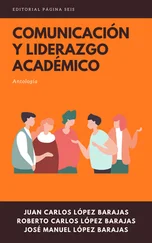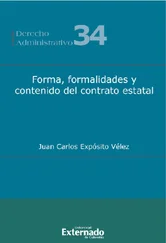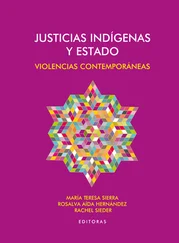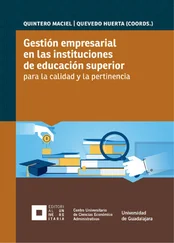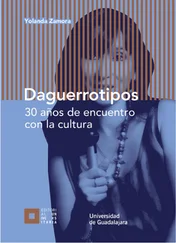Barros, M., Cabezón, O., Dubey, J. P., Almería, S., Ribas, M. P., Escobar, L. E., Ramos, B., y Medina-Vogel, G. (2018). Toxoplasma gondii infection in wild mustelids and cats across an urban-rural gradient. PLOS ONE , 13(6).
Barros, M., Sáenz, L., Lapierre, L., Nuñez, C., y Medina-Vogel, G. (2014). High prevalence of pathogenic Leptospira in alien American mink ( Neovison vison ) in Patagonia. Revista Chilena de Historia Natural, 87 (1), 19.
Barton, J., Pozo, R., Román, Á., y Salazar, A. (2013). Reestructuración urbana de un territorio globalizado: una caracterización del crecimiento orgánico en las ciudades de Chiloé, 1979-2008. Revista de Geografía Norte Grande, 56 , 121-142.
Bechtum, A. (2018). La minería a gran escala en la Patagonia sur: el caso de cerro Vanguardia y la localidad de puerto San Julián, Santa Cruz. Identidades, 8 (14).
Berdalet, E. P., Tester, A., y Zin-gone, A. (Eds.). (2012). Global ecology and oceanography of harmful algal blooms. GEOHAB Core Research Project: HABs in Benthic Systems. Paris and Newark: IOC of UNESCO and SCOR.
Blanco Wells, G., Arce, A., y Fisher, E. (2016). Intersubjetividad y domesticación en el devenir de una región global: territorialización del salmón en la Patagonia chilena. Revista de Ciencias Sociales, 54 , 125-145.
Boisier, J. P., Alvarez-Garretón, C., Cordero, R. R., Damiani, A., Gallardo, L., Garreaud, R. D., Lambert, F., Ramallo, C., Rojas, M., y Rondanelli, R. (2018). Anthropogenic drying in central-southern Chile evidenced by long-term observations and climate model simulations. Elementa: Science of the Anthropocene, 6 (1).
Borla, M. L., Kizman, S., y Rey, A. R. (2010). Compromiso Onashaga. Una experiencia sobre turismo y conservación. La fauna del canal Beagle como recurso vulnerable . Obtenido de: http://www.cadic-conicet.gob.ar/wp-content/uploads/2016/11/Onashaga-Borla-et-al.-2010.pdf
Bravo-Monasterio, P., Pauchard, A., y Fajardo, A. (2016). Pinus contorta invasion into treeless steppe reduces species richness and alters species traits of the local community. Biological Invasions, 18 (7), 1883-1894.
Buschmann, A. H., Riquelme, V. A., Hernández-González, M. C., Varela, D., Jiménez, J. E., Henríquez, L. A., Vergara, P. A., Guiñez, R., y Filún, L. (2006). A review of the impacts of salmonid farming on marine coastal ecosystems in the southeast Pacific. ICES Journal of Marine Science, 63 (7), 1338-1345.
Buschmann, A. H., Cabello, F., Young, K., Carvajal, J., Varela, D. A., y Henríquez, L. (2009). Salmon aquaculture and coastal ecosystem health in Chile: analysis of regulations, environmental impacts and bioremediation systems. Ocean y Coastal Management, 52 (5), 243-249.
Buschmann, A. H., Farías, L., Tapia, F., Varela, D., y Vásquez, M. (2016). Scientific report on the 2016 southern Chile red tide. Ministry of Economy, Chile. Obtenido de: www. academia deficiencias. cl/wp-contentuploads201704infofinal_ comision marearoja_21nov2016-pdf.
Buschmann, A. H., Niklitschek, E. J., y Pereda, S. (2021). Acuicultura y sus impactos en la conservación de la Patagonia chilena. En: J. C., Castilla, J. J., Armesto y M. J., Martínez-Harms (Eds.), Conservación en la Patagonia chilena: evaluación del conocimiento, oportunidades y desafíos , pp. 367-387. Santiago, Chile: Ediciones Universidad Católica de Chile.
Bustamante, L. P., Muñoz, M. D., y Contreras, R. S. (2010). Poblados mineros patagónicos: paisajes culturales y estructura territorial. Registros. Revista de Investigación Histórica, (7) , 49-61.
Campana, G. L., Zacher, K., Momo, F. R., Deregibus, D., Debandi, J. I., Ferreyra, G. A., y Quartino, M. L. (2020). Successional processes in Antarctic benthic algae. En I. Gómez, y P. Huovinen (Eds.) Antarctic Seaweeds , pp. 241-264. Switzerland: Springer, Cham.
Camus, P., Losada, I. J., Izaguirre, C., Espejo, A., Menéndez, M., y Pérez, J. (2017). Statistical wave climate projections for coastal impact assessments. Earth’s Future, 5 (9), 918-933.
Castilla, J. C. y Neill, P. E. (2009). Marine bioinvasions in the southeastern Pacific: status, ecology, economic impacts, conservation and management. En: G. Rilov, y J. A. Crooks (Eds.), Biological invasions in marine ecosystems: ecological, management, and geographic perspectives , pp. 439-457. Berlín, Germany: Springer-Verlag Center for International Earth Science Information Network, Columbia University and Internacional
Centre for Tropical Agriculture (2005). Gridded population of the world, version 3 (GPWv3): population density grid.
Cóbar-Carranza, A. J., García, R. A., Pauchard, A., y Pena, E. (2014). Effect of Pinus contorta invasion on forest fuel properties and its potential implications on the fire regime of Araucaria araucana and Nothofagus antarctica forests. Biological Invasions, 16 (11), 2273-2291.
Crego, R. D., Jiménez, J. E., y Rozzi, R. (2016). A synergistic trio of invasive mammals? Facilitative interactions among beavers, muskrats, and mink at the southern end of the Americas. Biological Invasions, 18 (7), 1923-1938.
De los Ríos Escalante, P., Kies, F., y Correa-Araneda, F. (2017). An update on the global stressors and constraints affecting Daphnia populations in large Chilean Patagonian lakes (39-51° S). Crustaceana, 90 (11-12), 1501-1516.
Díaz, S., Pascual, U., Stenseke, M., Martín-López, B., Watson, R. T., Molnár, Z., Hill, R., Chan, K. M. A., Baste, I. A., Brauman, K. A., Polasky, S. Church, A., Lonsdale, M., Lariauderie, A., Leadley, P. W., van Oudehoven, A. P. E., van der Plaat, F., Schroter, M., Lavorel, S., Aumeeruddy-Thomas, Y., Bukvareva, E., Davies, K., Demissew, S., Erpul, G., Failler, P., Guerra, C. A., Hewitt, C. L., Keune, H., Lindley, S., y Shirayama, Y. (2018). Assessing nature’s contributions to people. Science, 359 (6373), 270-272.
Diffenbaugh, N. S., Singh, D., y Mankin, J. S. (2018). Unprecedented climate events: historical changes, aspirational targets, and national commitments. Science Advances, 4 (2), eaao3354.
Dukes, J. S., y Mooney, H. A. (2004). Disruption of ecosystem processes in western North America by invasive species. Revista Chilena de Historia Natural, 77 (3), 411-437.
Durán-Romero, C., Villafane, V. E., Valinas, M. S., Gonçalves, R. J., y Helbling, E. W. (2017). Solar UVR sensitivity of phyto-and bacterioplankton communities from Patagonian coastal waters under increased nutrients and acidification. ICES Journal of Marine Science, 74 (4), 1062-1073.
Fajardo, J., Corcoran, D., Roehrdanz, P. R., Hannah, L., y Marquet, P. A. (2020). GCM compareR: a web application to assess differences and assist in the selection of General Circulation Models for climate change research. Methods in Ecology and Evolution, 11 , 656- 663.
Food and Agriculture Organization (2004). Marine biotoxins. Rome, Italy. 278 +vi pp. Obtenido de: http://www.fao.org/3/a-y5486e.pdf
Fu, F. X., Tatters, A. O., y Hutchins, D. A. (2012). Global change and the future of harmful algal blooms in the ocean. Marine Ecology Progress Series, 470 , 207-233.
García, P. E., Queimaliños, C., y Diéguez, M. C. (2019). Natural levels and photo-production rates of hydrogen peroxide (H 2O 2) in Andean Patagonian aquatic systems: influence of the dissolved organic matter pool. Chemosphere, 217 , 550-557.
Garreaud, R. D. (2018). Record-breaking climate anomalies lead to severe drought and environmental disruption in western Patagonia in 2016. Climate Research, 74 (3), 217-229.
Glibert, P. M., Icarus Allen, J., Artioli, Y., Beusen, A., Bouwman, L., Harle, J., Holmes, R., y Holt, J. (2014). Vulnerability of coastal ecosystems to changes in harmful algal bloom distribution in response to climate change: projections based on model analysis. Global Change Biology, 20 (12), 3845-3858.
Читать дальше
